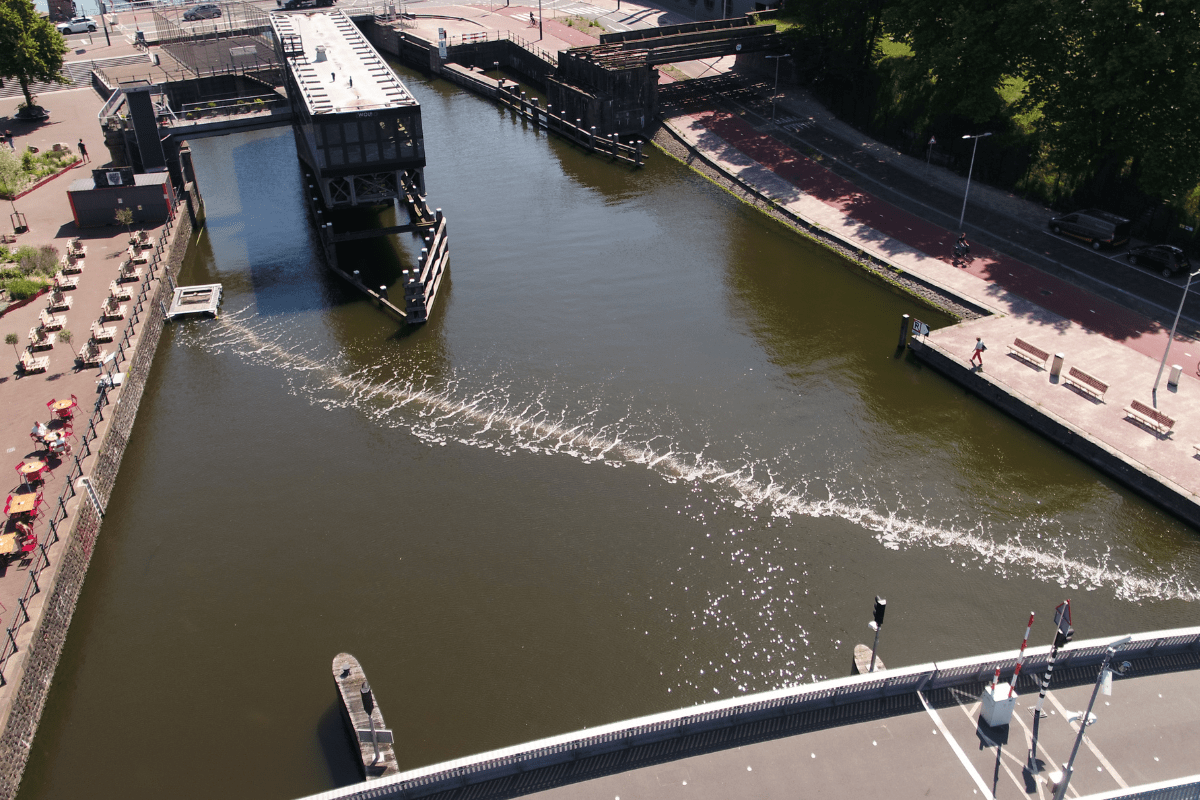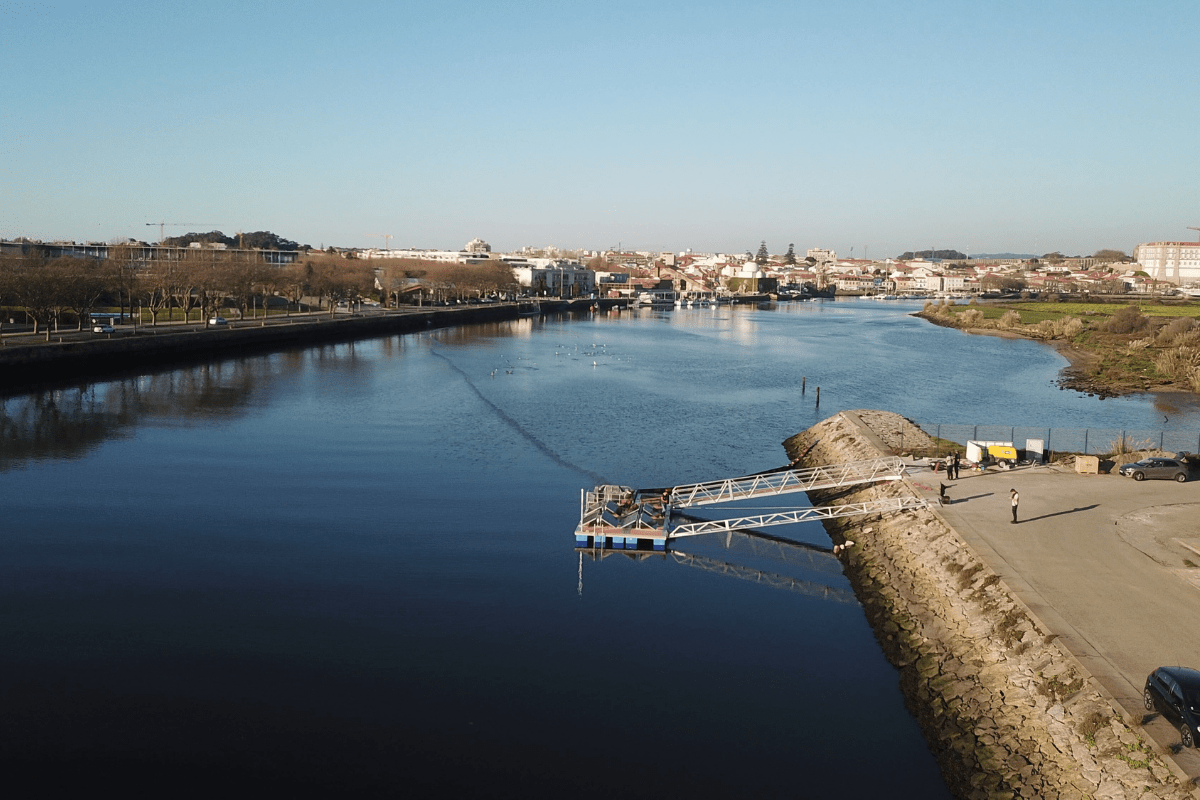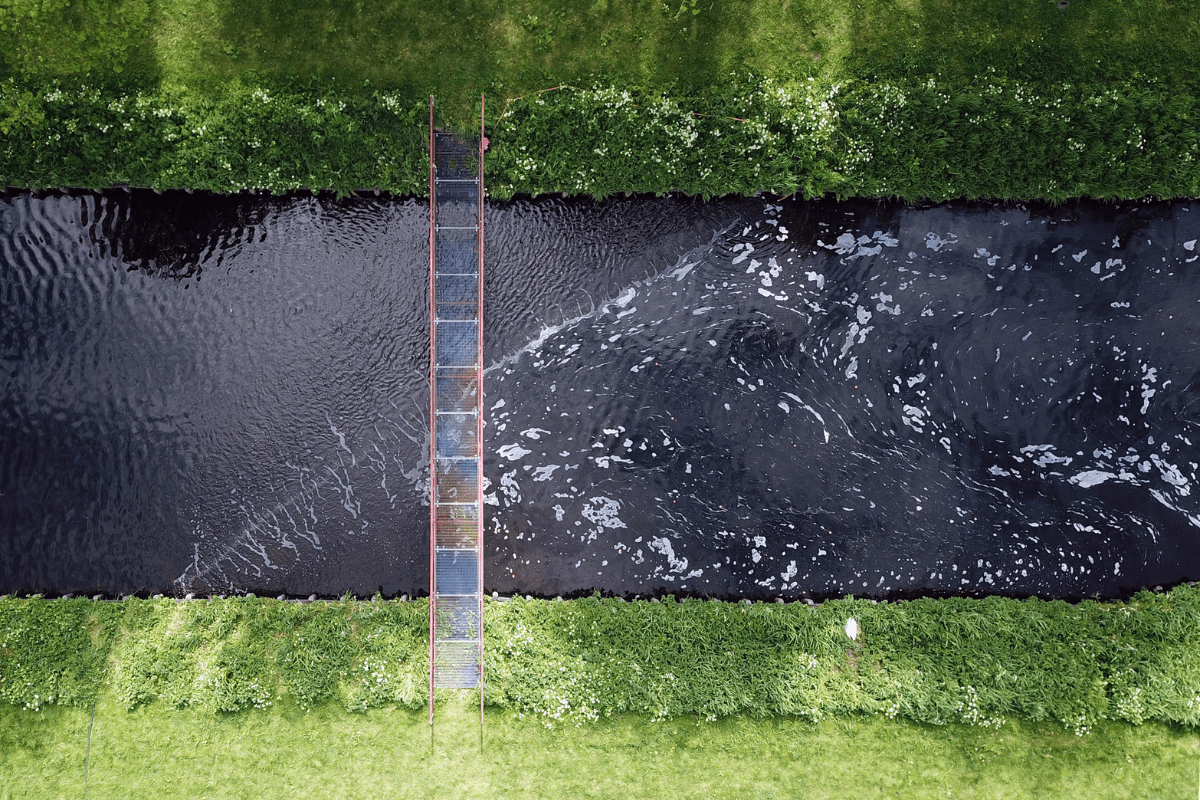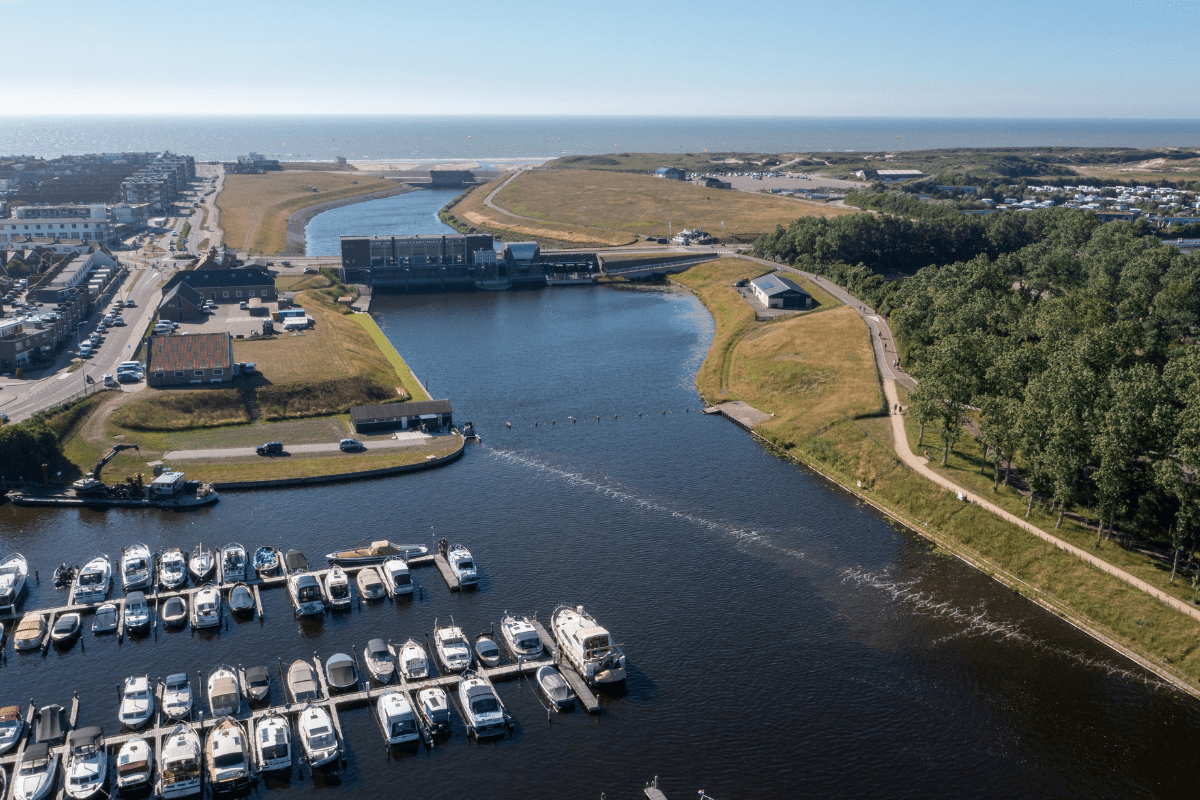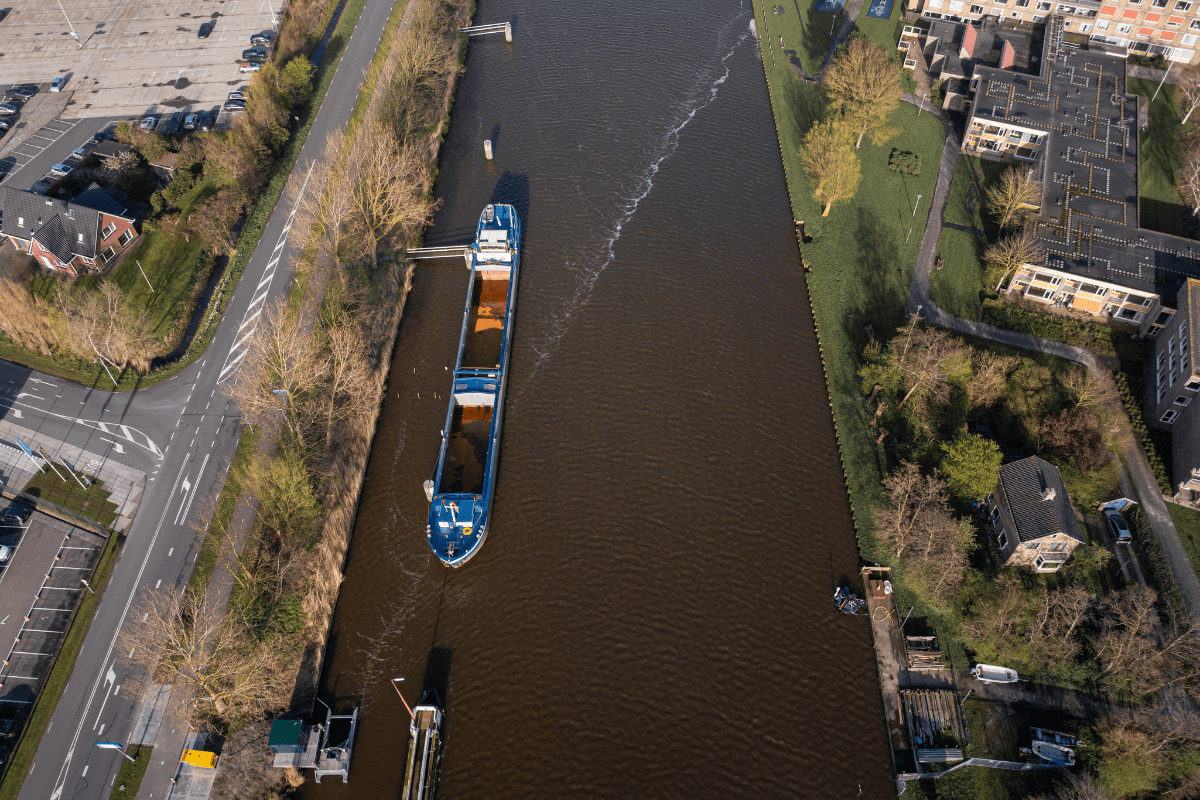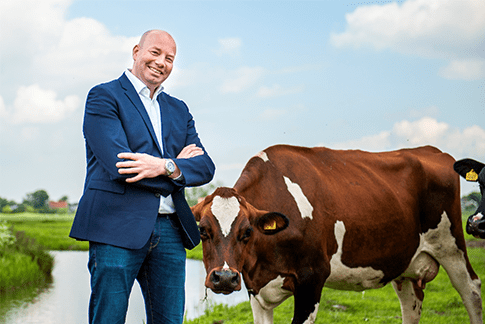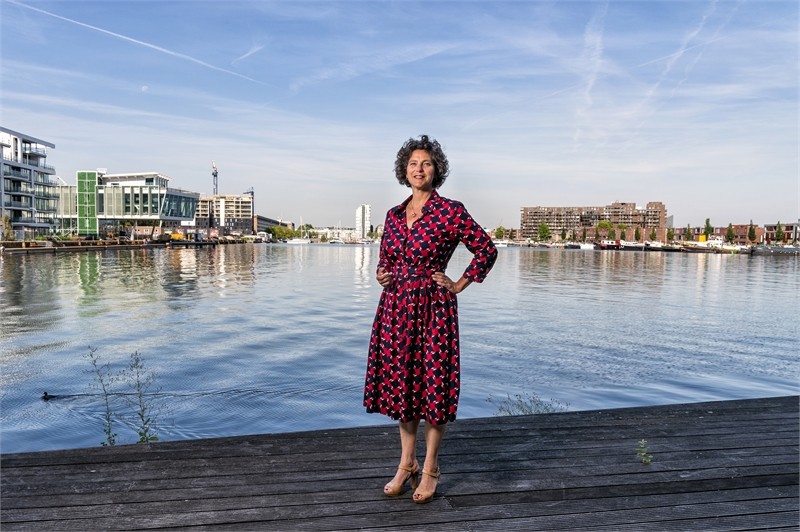Take action as a government
Catch riverine plastics and improve the local water quality
The problem of riverine plastic pollution impacts cities, water authorities and other government entities. By taking effective measures you can improve the water quality of your local area and thus bringing value to communities. You will establish your area as pioneering in the fight against plastic pollution.
ACT NOW
Start catching plastic within 6 months
Before we implement a Bubble Barrier, we carefully conduct research on the preferred location with you to ensure high quality and optimal performance. Typically, we go through the following four phases with our clients:
PHASE 1
3 months
Feasibility Study
- Locational analysis
- Collection of data
- Permit requirements
- Material requirements
- Preliminary project planning
PHASE 2
6 months
Realisation
- Final design
- Technical drawings
- Timeline determination
- Permit applications
- Assembly tailored catchment system
- Communication plan
PHASE 3
Operation & Maintenance
- Operational 24/7
- Educational purposes
- Scheduled maintenance of the system by TGBB or certified third party
PHASE 4
Monitoring & Awareness
- Train partners and local stakeholders to conduct research on the type and amount of plastic waste captured post-installation.
Are you ready to take action?
Send us an inquiry and we will get in touch with you.
VIEW MORE PROJECTS
Never enough bubbles
Get inspired by other Bubble Barrier locations!
Frequently Asked Questions
How much energy does one Bubble Barrier use?
The Bubble Barrier uses compressed air to create the bubble curtain. Depending on the scale and length of the Bubble Barrier, this is done by means of a compressor. The length of the Bubble Barrier has a significant influence on the necessary energy usage. We will always be looking for the most energy-efficient configuration, but this may vary per city and infrastructure. Our Bubble Barrier uses much less energy than bubble curtains that are used to separate fresh from saltwater or to prevent oil spills. Our first Bubble Barrier in Amsterdam is consuming about the amount of energy of an electric city street sweeper car here in The Netherlands.
How much does one Bubble Barrier catch?
The amount of items collected depends first on the amount of pollution present in the water. In test conducted in the river IJssel, the Bubble Barrier caught approximately 86% of tracers.
The preliminary results of our one year study with Plastic Soup Foundation shows that Bubble Barrier Amsterdam catches on average 85 kg each month of inorganic debris, the equivalent of 2,7 tonnes.
The one-year study that will provide information on the type and amount of plastic found in our waterways, following the OSPAR method. With this research we will provide valuable insights to municipalities and governments to further strengthen the urgency to act and put in place measures to stop plastic pollution. Expected results of 2022.
Can the Bubble Barrier catch microplastics as well?
Yes, in a pilot conducted in Berlin our Bubble Barrier system has proven it could catch particles as small as 1 millimetre up to 1 metre.
We often witness this in sorting events we conduct every month in collaboration with Plastic Soup Foundation, where we found a staggering number of Styrofoam particles.
We know that microplastics (particles smaller than 5 mm) are directly derived from macro plastics therefore it is crucial to collect those items before they reach the seas where it will be impossible to retrieve them as currently there is no technology to collect nonvisible microplastic (smaller than 1 mm).
What do you do with the catch? How are you handling the plastic collected?
Plastic caught by Bubble Barrier Amsterdam is collected by the Water Authority here in Amsterdam who in turn send it to a recycling centre.
Part of it is collected monthly for a research study led by the Plastic Soup Foundation together with Waternet to underpin the exact amount, type, brand and origin of the plastics.
Wherever we implement a Bubble Barrier we help to ensure our waste is processed in the most sustainable way through existing waste management systems.
We are also currently exploring with partners how to upcycle our collected plastics to turn it into items that improve people’s lives and contribute to a circular economy.
However as a tech start up we focus our effort on the efficacy and deployment of the Bubble Barrier technology and its catchment system. There are other great innovative start ups focusing on sorting, identification and recycling only.
How different are you from other solutions?
There are a lot of litter traps and booms available in the world. Our system is the only one able to cover the full width and depth of a small or medium waterway without hindering fish migration or ship traffic. Bubbles can also have a positive impact on ecosystem as they increase oxygenation level which is beneficial for aquatic life.
How does the Bubble Barrier interact with fish?
Fish can pass through the bubble curtain and under the CS.
Our Bubble Barriers are designed to stop as much plastic as possible with the least amount of air possible. It is a single curtain, in contrast to some fish deflection screens of e.g. six curtains in a row. There are no additional stimuli, like light and sound. Therefore, the set-up differs quite strongly from the bubble curtains used for fish deflection and we can say with certainty that our Bubble Barrier doesn’t block fish.
Nevertheless, we find it important to keep researching fish behavior around our bubble curtains. Our latest research focused on smaller fish around the Bubble Barrier Amsterdam. This research showed smaller fish passing through the bubble barrier and underneath the catchment system.
Due to the complexity of fish behaviour, we will always continue our collaboration with ecologist.
For more information please read our white paper.
What is the cost of a Bubble Barrier?
All rivers are different, therefore so is the costs to clean them. Plastic Pollution has an enormous and growing cost to society and the environment. Infrastructures like a Bubble Barrier is an investment, with prices starting at 350K euros. However, with 90% catch rate on tested materials, the cost of one Bubble Barrier system fits well under municipalities’ budget to clean their cities and doesn’t compare with the costs of plastic pollution in our environment. It’s time to rethink the way we approach “cost”.
Please visit our general FAQ page for more information and questions.
TESTIMONIALS
How pioneering governments took action
Discover why governments decided to install a Bubble Barrier .
Testimonials
Cities and regions took the matter into their own hands. Read their stories and get inspired to take action.
Take action
Ready to take action? Get in touch to discover the possibilities.

